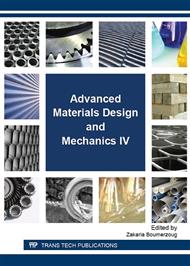p.28
p.33
p.38
p.42
p.51
p.59
p.64
p.70
p.74
Influence of High-Temperature Ageing on Mechanical Properties of Low Alloy Steel Clad Plate Welded Joints
Abstract:
In this paper, the mechanical properties of welded joints of Q345R/304 stainless steel clad plates after high temperature ageing were studied. E309Nb welding rod, ER310 welding wire, and ER309L welding wire were used as cladding filling materials, and ER50-6 welding wire was used as base-layer filling material. The mechanical properties of welded joints were characterized by micro-hardness measurement and mechanics performance testing respectively, after ageing treatment at 600°C for 100 hours. Test results showed that there was lower carbon diffusion in the ER309L joint-base layer and transition layer than those of other two joints after high temperature ageing, and the hardness value had little change around ER309L joint-fusion zone. The microstructure of ER309L joint-fusion zone was different from that of other two joints. The impact test after high temperature ageing indicateed the impact toughness of three welding joints decreased obviously, and the weld zone of ER309L joint presented a worst toughness, which leded to the occurrence of brittle fracture.
Info:
Periodical:
Pages:
51-55
Citation:
Online since:
November 2016
Authors:
Keywords:
Price:
Сopyright:
© 2017 Trans Tech Publications Ltd. All Rights Reserved
Share:
Citation:


